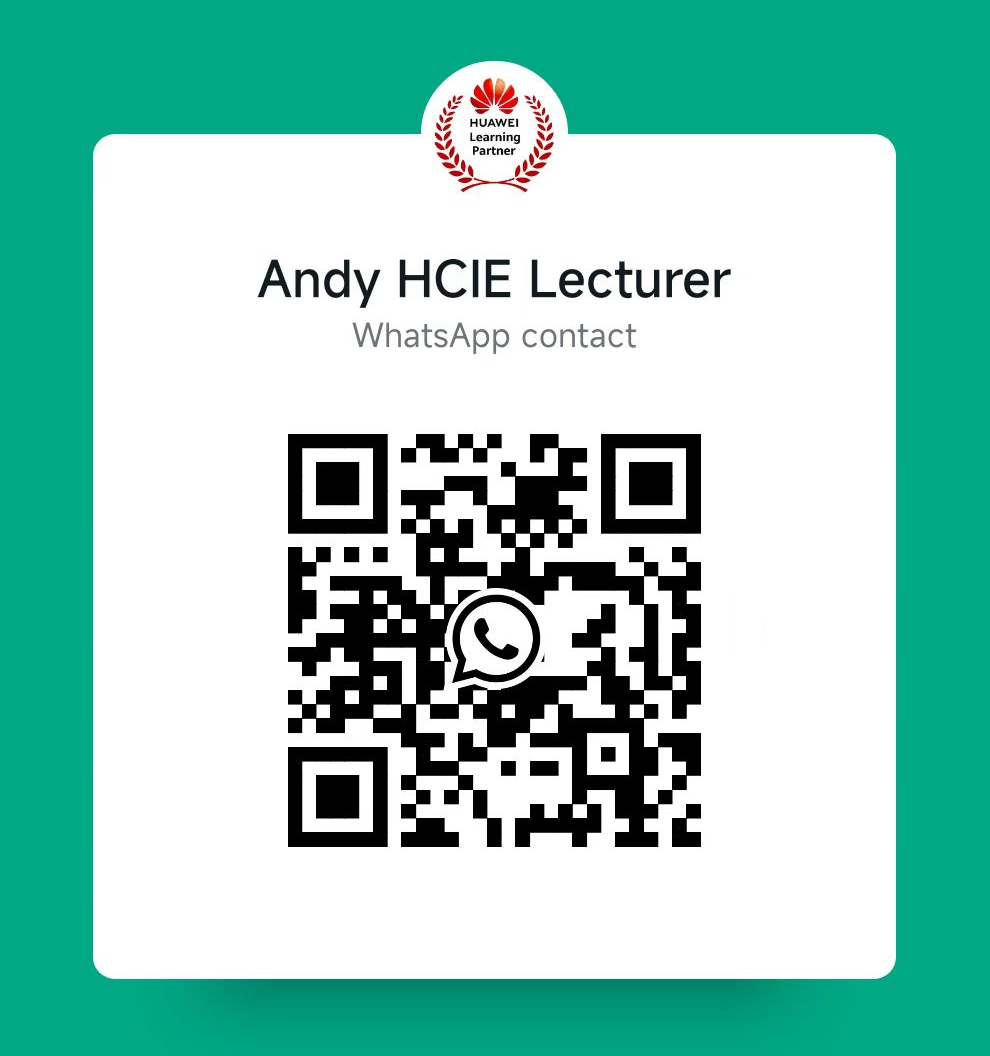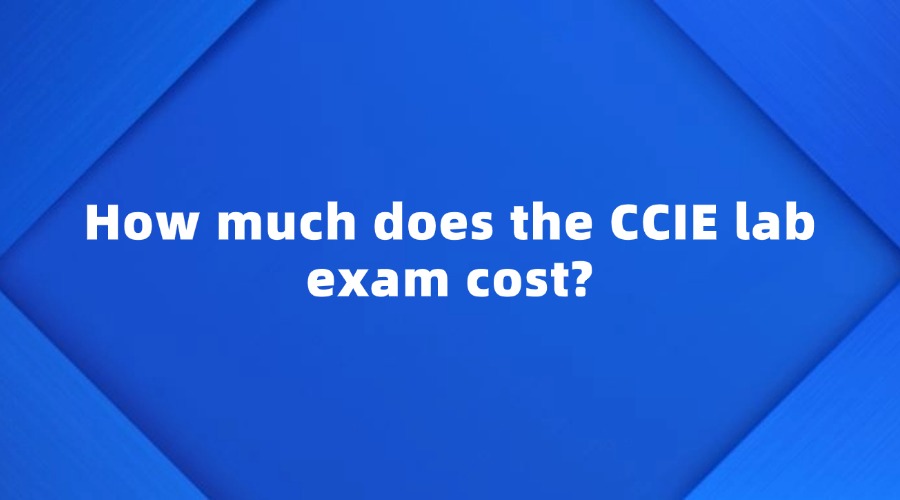What does the CCNA exam consist of?
Update time:2024-11-02
The Cisco Certified Network Associate (CCNA) certification is a highly respected credential in the IT and networking field. It is designed to validate a professional's knowledge and skills related to network fundamentals, IP connectivity, automation, and more. The CCNA exam (exam code 200-301) tests a wide range of topics, making it essential for candidates to understand exactly what the exam consists of and how to prepare for it effectively.

In this article, we will break down the key components of the CCNA exam, including the structure, main topics, and preparation tips to help candidates succeed.
1. Overview of the CCNA Exam
The CCNA exam is intended to evaluate an individual’s understanding of basic networking concepts, including network access, IP services, and security fundamentals. It consists of a single exam, which covers multiple networking areas. The exam has a duration of 120 minutes, and it typically includes 100-120 questions, although the number of questions may vary slightly.
Exam Code: 200-301
Duration: 120 minutes
Question Types: The exam includes various types of questions, including multiple-choice, drag-and-drop, fill-in-the-blank, and simulation-based questions that test your hands-on skills.
2. Core Topics Covered in the CCNA Exam
The CCNA exam covers several core areas of networking, automation, and security. Understanding these topics and how they fit into real-world networking scenarios is key to passing the exam. Below is a breakdown of the six major domains covered in the exam:
2.1 Network Fundamentals
Network Fundamentals is one of the largest sections of the CCNA exam. It tests your understanding of basic networking concepts and technologies, including:
OSI and TCP/IP Models: You will need to know how data is transmitted across networks, using both the OSI and TCP/IP models.
IP Addressing: This includes IPv4 and IPv6 addressing, how to assign and manage IP addresses, and subnetting, which involves dividing a network into smaller subnetworks.
Cabling and Physical Infrastructure: Understanding the different types of network cables (such as Ethernet and fiber optics) and how they are used in a network is essential.
2.2 Network Access
This section covers how devices connect to networks, including both wired and wireless access.
Switching: You will be tested on how switches operate, the functions of MAC addresses, and VLANs (Virtual Local Area Networks). VLAN configuration and management are key components of this section.
Spanning Tree Protocol (STP): STP prevents loops in a network. Understanding how STP works is essential for preventing network disruptions.
Wireless Networking: You will need to know the basics of wireless technologies, such as Wi-Fi standards, security protocols, and wireless network management.
2.3 IP Connectivity
The IP Connectivity section focuses on how data packets are routed from one network to another.
Routing Concepts: You will be tested on how routers work, how to configure routing protocols, and how routers determine the best path for data.
Routing Protocols: These include both static routing and dynamic routing protocols like OSPF (Open Shortest Path First) and EIGRP (Enhanced Interior Gateway Routing Protocol). You need to understand how these protocols are configured and used in different networking scenarios.
2.4 IP Services
The IP Services section includes a range of technologies and protocols that ensure the efficient operation of networks.
DHCP (Dynamic Host Configuration Protocol): DHCP automates the assignment of IP addresses to devices on a network, making it easier to manage large networks.
NAT (Network Address Translation): NAT allows private IP addresses to communicate with public networks like the internet. You’ll need to understand the different types of NAT, including static and dynamic NAT and PAT (Port Address Translation).
DNS (Domain Name System): DNS translates human-readable domain names (like www.example.com) into IP addresses. Understanding DNS configuration and troubleshooting is essential.
Contact me immediately to get the golden key helping you fast express your certificate. 2.5 Security Fundamentals
Network security is critical in today's digital environment, and the CCNA exam places a strong emphasis on security best practices.
Access Control Lists (ACLs): ACLs are used to control who can access parts of a network. You will need to know how to configure both standard and extended ACLs.
VPNs (Virtual Private Networks): VPNs allow secure communication over public networks, such as the internet. The exam covers basic VPN concepts and configurations.
Device Hardening: This involves securing network devices like routers and switches to prevent unauthorized access. The exam will test your knowledge of techniques like password encryption, disabling unused ports, and using SSH (Secure Shell) for remote access.
2.6 Automation and Programmability
The CCNA exam also tests your understanding of network automation and programmability, which are becoming increasingly important in modern networks.
Automation Tools: You will need to understand basic automation tools, such as Python and Ansible, that are used to automate network tasks like configuration and management.
APIs (Application Programming Interfaces): APIs allow different applications to communicate with each other. The exam covers how APIs are used in networking, particularly in software-defined networking (SDN).
Software-Defined Networking (SDN): SDN separates the control plane from the data plane, making networks more flexible and programmable. Understanding SDN concepts is key to passing this section of the exam.
3. Types of Questions in the CCNA Exam
The CCNA exam consists of several types of questions to test both your theoretical knowledge and practical skills. These include:
Multiple-Choice Questions: Standard multiple-choice questions where you choose the correct answer from a list of options.
Drag-and-Drop Questions: You will be asked to match terms or concepts by dragging and dropping them into the correct locations.
Fill-in-the-Blank: These questions require you to type the correct answer, often related to commands or specific configurations.
Simulation Questions: These hands-on questions test your ability to configure and troubleshoot network devices, such as routers and switches, in a simulated environment.
4. How to Prepare for the CCNA Exam
The CCNA exam is comprehensive, and proper preparation is key to passing it on your first attempt. Here are some tips to help you get ready:
Study Materials: Use Cisco’s official study materials, such as the CCNA study guide and practice tests. Many online platforms offer video tutorials, books, and practice exams specifically designed for CCNA preparation.
Hands-on Practice: It’s essential to get hands-on experience with networking equipment, such as routers and switches. You can set up a home lab or use online simulators like Cisco Packet Tracer or GNS3 to practice configurations.
Practice Exams: Taking practice exams is crucial for understanding the exam format and identifying areas where you need to improve.
Time Management: The CCNA exam is time-limited, so practice answering questions quickly and accurately. Time management during the exam is critical to ensure you can complete all questions.
Conclusion
The CCNA exam covers a wide range of topics, from network fundamentals to automation and security. Understanding what the exam consists of, including the different types of questions and key topics, is essential for successful preparation. By focusing on these areas and practicing your hands-on skills, you’ll be well-prepared to pass the CCNA exam and earn this valuable certification.
I'm your man who have the 100% valid dumps , buy it now for 50% off to clear your exam!
Click it ↓↓

In this article, we will break down the key components of the CCNA exam, including the structure, main topics, and preparation tips to help candidates succeed.
1. Overview of the CCNA Exam
The CCNA exam is intended to evaluate an individual’s understanding of basic networking concepts, including network access, IP services, and security fundamentals. It consists of a single exam, which covers multiple networking areas. The exam has a duration of 120 minutes, and it typically includes 100-120 questions, although the number of questions may vary slightly.
Exam Code: 200-301
Duration: 120 minutes
Question Types: The exam includes various types of questions, including multiple-choice, drag-and-drop, fill-in-the-blank, and simulation-based questions that test your hands-on skills.
2. Core Topics Covered in the CCNA Exam
The CCNA exam covers several core areas of networking, automation, and security. Understanding these topics and how they fit into real-world networking scenarios is key to passing the exam. Below is a breakdown of the six major domains covered in the exam:
2.1 Network Fundamentals
Network Fundamentals is one of the largest sections of the CCNA exam. It tests your understanding of basic networking concepts and technologies, including:
OSI and TCP/IP Models: You will need to know how data is transmitted across networks, using both the OSI and TCP/IP models.
IP Addressing: This includes IPv4 and IPv6 addressing, how to assign and manage IP addresses, and subnetting, which involves dividing a network into smaller subnetworks.
Cabling and Physical Infrastructure: Understanding the different types of network cables (such as Ethernet and fiber optics) and how they are used in a network is essential.
2.2 Network Access
This section covers how devices connect to networks, including both wired and wireless access.
Switching: You will be tested on how switches operate, the functions of MAC addresses, and VLANs (Virtual Local Area Networks). VLAN configuration and management are key components of this section.
Spanning Tree Protocol (STP): STP prevents loops in a network. Understanding how STP works is essential for preventing network disruptions.
Wireless Networking: You will need to know the basics of wireless technologies, such as Wi-Fi standards, security protocols, and wireless network management.
2.3 IP Connectivity
The IP Connectivity section focuses on how data packets are routed from one network to another.
Routing Concepts: You will be tested on how routers work, how to configure routing protocols, and how routers determine the best path for data.
Routing Protocols: These include both static routing and dynamic routing protocols like OSPF (Open Shortest Path First) and EIGRP (Enhanced Interior Gateway Routing Protocol). You need to understand how these protocols are configured and used in different networking scenarios.
2.4 IP Services
The IP Services section includes a range of technologies and protocols that ensure the efficient operation of networks.
DHCP (Dynamic Host Configuration Protocol): DHCP automates the assignment of IP addresses to devices on a network, making it easier to manage large networks.
NAT (Network Address Translation): NAT allows private IP addresses to communicate with public networks like the internet. You’ll need to understand the different types of NAT, including static and dynamic NAT and PAT (Port Address Translation).
DNS (Domain Name System): DNS translates human-readable domain names (like www.example.com) into IP addresses. Understanding DNS configuration and troubleshooting is essential.
Contact me immediately to get the golden key helping you fast express your certificate. 2.5 Security Fundamentals
Network security is critical in today's digital environment, and the CCNA exam places a strong emphasis on security best practices.
Access Control Lists (ACLs): ACLs are used to control who can access parts of a network. You will need to know how to configure both standard and extended ACLs.
VPNs (Virtual Private Networks): VPNs allow secure communication over public networks, such as the internet. The exam covers basic VPN concepts and configurations.
Device Hardening: This involves securing network devices like routers and switches to prevent unauthorized access. The exam will test your knowledge of techniques like password encryption, disabling unused ports, and using SSH (Secure Shell) for remote access.
2.6 Automation and Programmability
The CCNA exam also tests your understanding of network automation and programmability, which are becoming increasingly important in modern networks.
Automation Tools: You will need to understand basic automation tools, such as Python and Ansible, that are used to automate network tasks like configuration and management.
APIs (Application Programming Interfaces): APIs allow different applications to communicate with each other. The exam covers how APIs are used in networking, particularly in software-defined networking (SDN).
Software-Defined Networking (SDN): SDN separates the control plane from the data plane, making networks more flexible and programmable. Understanding SDN concepts is key to passing this section of the exam.
3. Types of Questions in the CCNA Exam
The CCNA exam consists of several types of questions to test both your theoretical knowledge and practical skills. These include:
Multiple-Choice Questions: Standard multiple-choice questions where you choose the correct answer from a list of options.
Drag-and-Drop Questions: You will be asked to match terms or concepts by dragging and dropping them into the correct locations.
Fill-in-the-Blank: These questions require you to type the correct answer, often related to commands or specific configurations.
Simulation Questions: These hands-on questions test your ability to configure and troubleshoot network devices, such as routers and switches, in a simulated environment.
4. How to Prepare for the CCNA Exam
The CCNA exam is comprehensive, and proper preparation is key to passing it on your first attempt. Here are some tips to help you get ready:
Study Materials: Use Cisco’s official study materials, such as the CCNA study guide and practice tests. Many online platforms offer video tutorials, books, and practice exams specifically designed for CCNA preparation.
Hands-on Practice: It’s essential to get hands-on experience with networking equipment, such as routers and switches. You can set up a home lab or use online simulators like Cisco Packet Tracer or GNS3 to practice configurations.
Practice Exams: Taking practice exams is crucial for understanding the exam format and identifying areas where you need to improve.
Time Management: The CCNA exam is time-limited, so practice answering questions quickly and accurately. Time management during the exam is critical to ensure you can complete all questions.
Conclusion
The CCNA exam covers a wide range of topics, from network fundamentals to automation and security. Understanding what the exam consists of, including the different types of questions and key topics, is essential for successful preparation. By focusing on these areas and practicing your hands-on skills, you’ll be well-prepared to pass the CCNA exam and earn this valuable certification.
I'm your man who have the 100% valid dumps , buy it now for 50% off to clear your exam!
Click it ↓↓
Previous:What topics are covered in CCNA?














